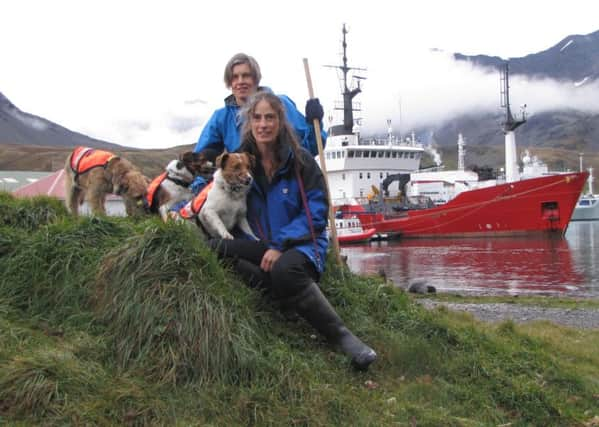Britain's biggest bird sanctuary rescued by rat cull


Captain Cook discovered South Georgia in 1775 and claimed it for Britain. Polar explorer Sir Ernest Shackleton hiked over its mountainous terrain to get help for his crew, who were stranded on an island 800 miles away during an expedition in 1916. He was eventually buried on South Georgia after dying there on a later mission.
The sub-Antarctic island has no native land animals, but is a hotspot for marine life, penguins and globally important seabirds.
Advertisement
Hide AdAdvertisement
Hide AdHowever, the impact of human visitors has taken a terrible toll. Brown rats first arrived in the late 18th century aboard sealing ships, and South Georgia was soon over-run with the rodents in the absence of any natural predators.
Their presence had a devastating impact on seabirds nesting there. Two endemic species, the South Georgia pipit and pintail duck, were driven to the verge of extinction and local populations of around 30 other species have been drastically reduced.
In a bid to protect the birds, South Georgia Heritage Trust (SGHT), a Scottish charity based in Dundee, spearheaded a £7.5m project to wipe out the marauding rats. From 2011 to 2015 this saw specially formulated poisoned bait dropped on the island.
The last stage of the initiative, which involved three specially trained sniffer dogs and a team of 16 experts covering thousands of square kilometres of rugged landscape to search for any trace of remaining vermin, has just been completed.
The South Georgia government also carried out a total cull of reindeer herds, which had been introduced as a source of meat for whalers but were wreaking havoc on vegetation.
It’s now hoped South Georgia, which has no permanent human population, can be declared officially free from rats and will once again resonate with the sound of seabird colonies.
Alison Neil, chief executive of SGHT, said visitors to the island see all the penguins and think everything is fine.
“What they don’t realise is hundreds of millions of seabirds should be there but aren’t,” she said. “Our goal has been to totally eradicate the rodents – if even one pregnant female remains they would multiply and we would soon be back to square one.
Advertisement
Hide AdAdvertisement
Hide Ad“Our hope is the island will be declared rat-free and there will be 100 million more seabirds nesting there in the future, as scientists have predicted.”
The signs are encouraging so far. “We’ve seen evidence of a massive recovery in some of the threatened species,” said Neil. “For example, the two endemic birds – the pintail and the pipit – they’ve both increased in huge numbers.
“The pintail, a really gorgeous duck, was not able to breed successfully on the island because the rats were attacking their nests. Nobody had seen pintail ducklings in living memory. Now they’re all over the place.”
But ornithologists will have to be patient. “Some of the other birds have longer breeding cycles so it could be a while before the full impact of the eradication becomes clear. It’s likely millions of birds such as petrels and prions will benefit, but these species will take longer to re-establish themselves.
“It’s hoped South Georgia will eventually become the place with the highest concentration of seabirds in the world.”
Dickie Hall, the SGHT project director, is also delighted by the results. “The song of South Georgia pipits, the most southerly songbird, is now louder than the bark of elephant seals,” he said.
But he added a note of warning: “This survey has been the culmination of 10 years of planning and months of challenging fieldwork over four sub-Antarctic seasons by an international team. There is no room for error.”
Results from the project are due to be published on 8 May.